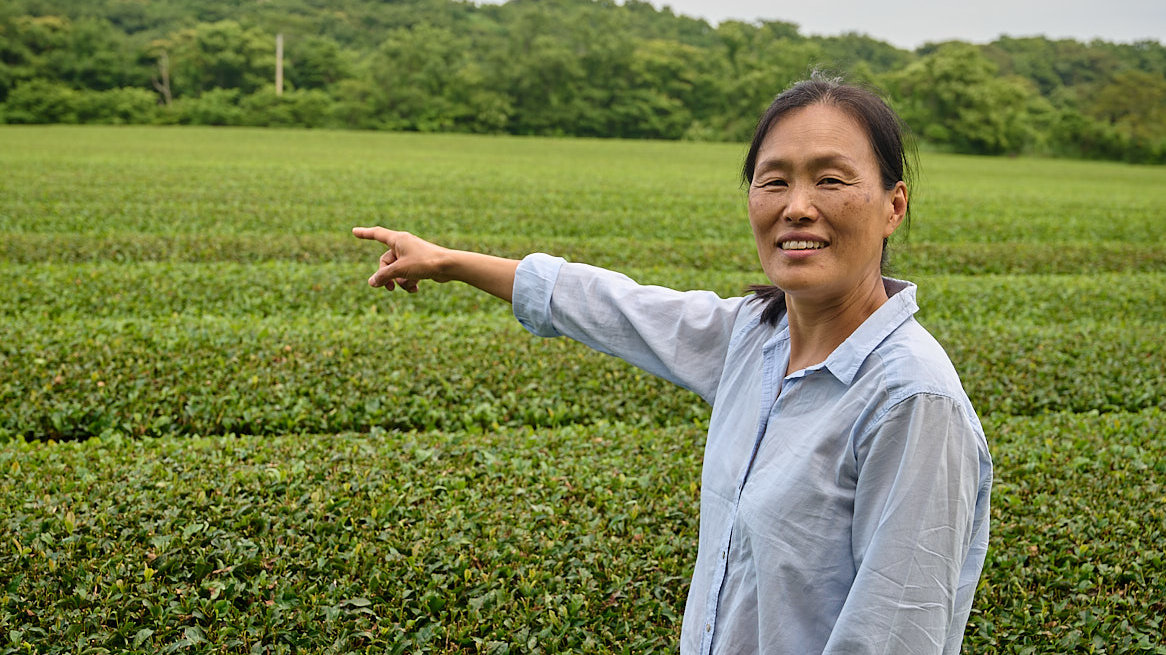
Different teas from the process, not the plant
There are so many types of tea, it can be difficult to get an overview. Traditionally, there are 6 different types of tea, all of which come from the tea shrub camellia sinensis:
-
black tea
-
green tea
-
white tea
-
oolong
-
pu'er
-
yellow tea
Oxidation - a chemical process
When you grow a tea, you have already decided in advance which variety to produce, and you choose the plants that give the best taste, the best harvest, resistance to diseases, etc. But it is not the choice of plant that determines the variety, but the process afterwards. The most important step is the oxidation. Here's how: If you cut an apple into two pieces, the cut surfaces darken quite quickly and turn brown. This is an oxidation, i.e. a reaction with the oxygen in the air. If you heat the cut surfaces instead by dipping the apple in boiling water, it will not darken. This is because the oxidation is due to the presence of an enzyme (polyphenol oxidase). It is an enzyme that "helps" the oxidation to take place, but it is not consumed in the process. By heating the cut surfaces, the enzyme is destroyed, and oxidation no longer occurs so easily.
This is a purely chemical process, without any bacteria or fungi. It's also exactly the same thing that happens in the tea leaves when you make black tea. So black tea is oxidized, while green tea has to be heated to destroy the enzyme, and sort of "fix the tea in a green state". Oolong is a cross between black and green. It is partially oxidized; lighter oolong a little less, and darker oolong a little more. What about white tea? It's just dried tea leaves. You can spread the tea leaves out and dry them in the sun, or else in a drying oven. It is therefore reputed to be the most "natural", as it is only dried. If it contains a lot of moisture, it can still oxidize a bit. One such variety is Bai Mudan.
What about fermentation?
In the past, it was said that black tea was fermented, but that's not quite right. Pu'er, on the other hand, is fermented, or yeast. It is a microbiological process, involving lactic acid bacteria etc. in the same way as when you make yogurt or ferment vegetables. If you count the oxidation time in hours, you count the fermentation in days, so it's a slower process. We sometimes refer to pu'er as 'aged tea', as it is normally stored and allowed to mature in flavor over several years.
Yellow tea is its own little chapter. You start the process like making green tea, but instead of drying the leaves at the end, you wrap them in linen cloths. This allows the flavor and aroma to emerge. The leaves yellow slightly - they don't exactly turn bright yellow - and since yellow was traditionally the color of the emperor in China, it became known as a tribute tea to the emperor.
Is rooibos tea?
What about rooibos? It is a native plant , aspalathus linearis which only grows in South Africa. It is therefore a herbal tea, just like chamomile. The word rooibos means 'red bush' in Afrikaans, and has been drunk for centuries by the people around the Cederberg in South Africa.
